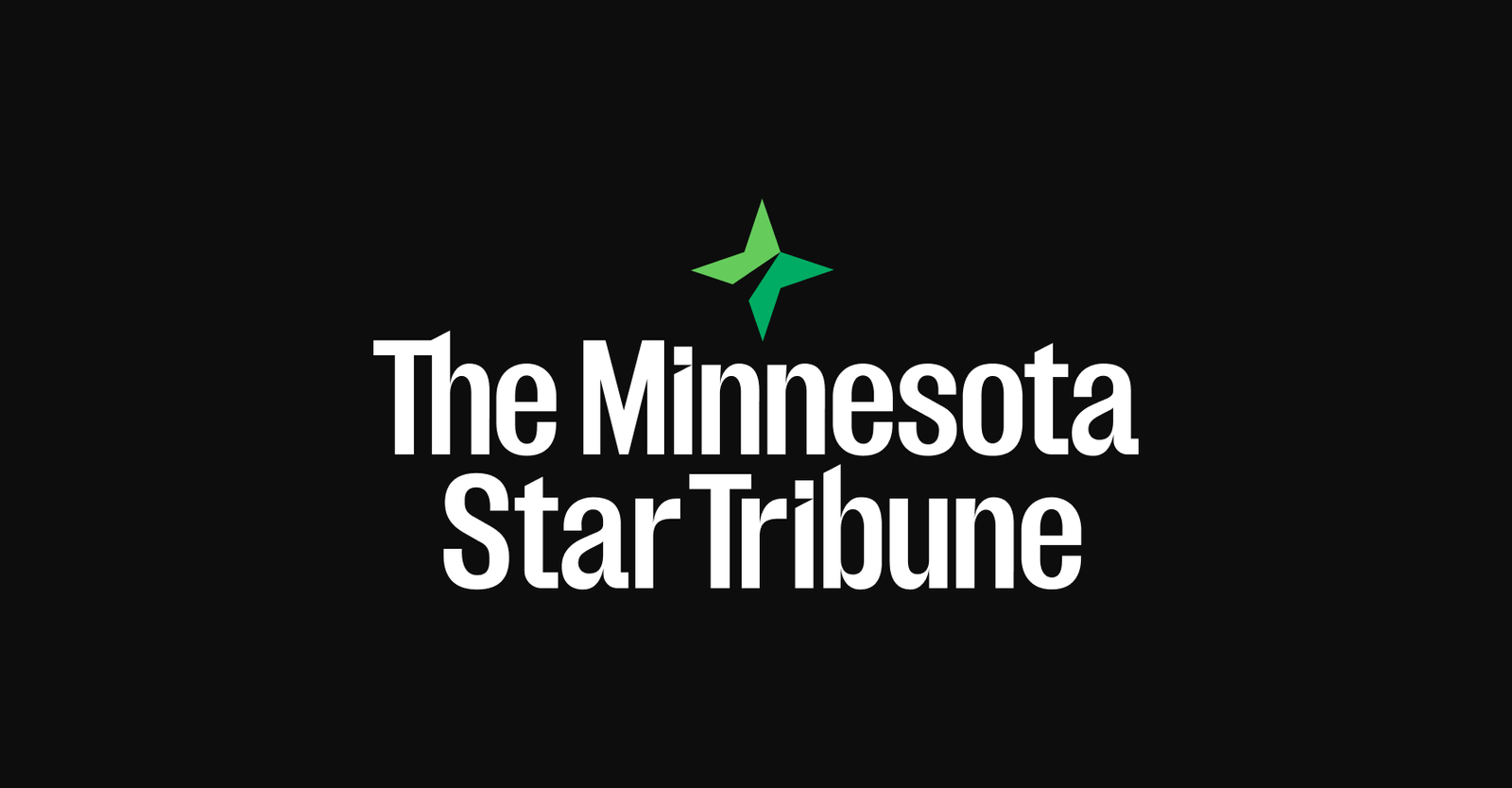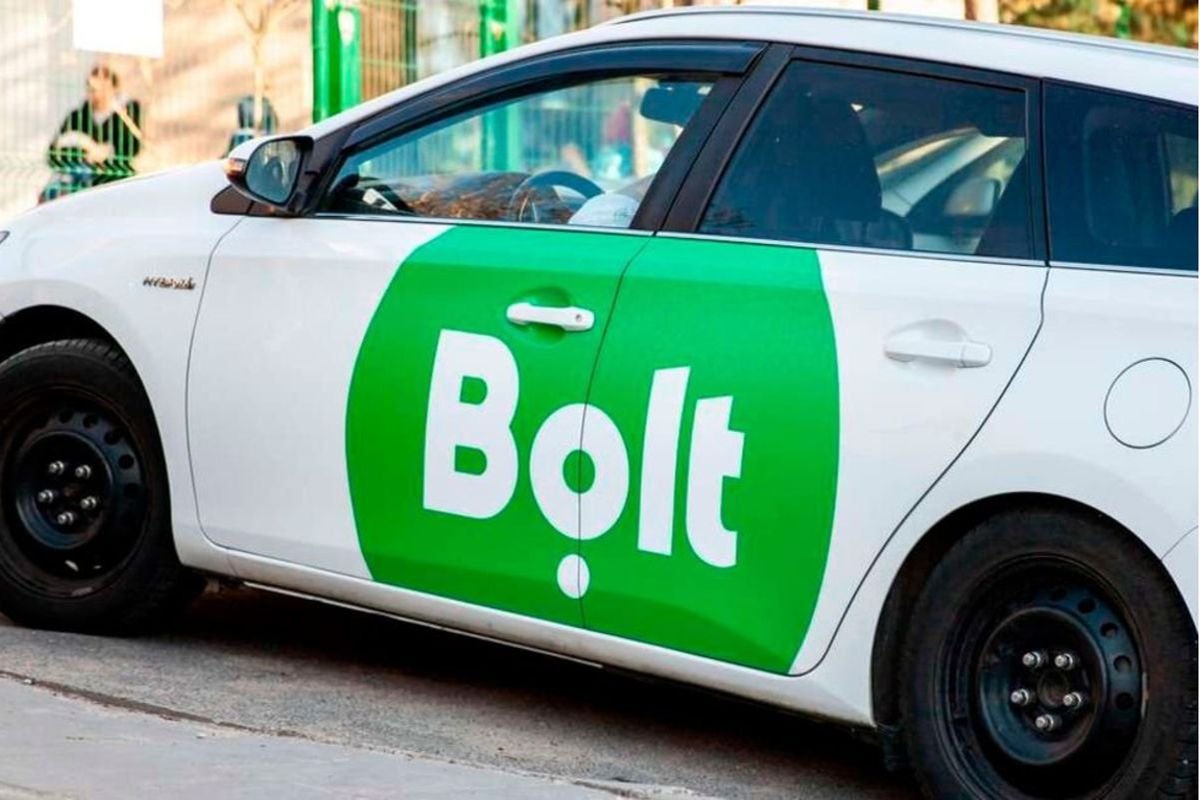Ride & Mobility
Non-Emergency Medical Transportation Strategic Business Report 2025 | Market to Reach $24.3 Billion by 2030 – Participation of Ride-Hailing Giants Expands Service Reach and Cost Flexibility – ResearchAndMarkets.com

The “Non-Emergency Medical Transportation – Global Strategic Business Report” report has been added to ResearchAndMarkets.com’s offering.
The global market for Non-Emergency Medical Transportation was estimated at US$16.2 Billion in 2024 and is projected to reach US$24.3 Billion by 2030, growing at a CAGR of 7.0% from 2024 to 2030. This comprehensive report provides an in-depth analysis of market trends, drivers, and forecasts, helping you make informed business decisions. The report includes the most recent global tariff developments and how they impact the Non-Emergency Medical Transportation market.
Growth in the non emergency medical transportation market is driven by several factors.
Expanding coverage of NEMT services in public insurance plans has increased demand and funding. Providers are adopting advanced digital dispatch, routing, and tracking software to improve service efficiency and regulatory compliance. Partnerships with ride-hailing networks and telehealth platforms are supporting new integrated care offerings.
Focus on patient outcomes and appointment attendance is motivating payers to reimburse more extensively for reliable NEMT services. Regulatory emphasis on accessible, safe medical transport continues encouraging investment in driver training and accessible vehicle fleets. Meanwhile, demand for convenient, on demand mobility solutions, especially among aging and mobility-impaired populations, is strengthening long term market growth.
How Are Regulatory Shifts and Health Policies Reshaping Non Emergency Medical Transportation?
Non-emergency medical transportation (NEMT) services provide vital mobility for patients who need assistance reaching appointments but do not require emergency care. Over the past few years, health policies have increasingly recognized reliable NEMT as essential to improving access and reducing hospital readmissions. Many public and private health insurers now include NEMT in benefit packages to ensure equitable care delivery. New regulations around Medicaid and value based care emphasize performance metrics-such as timeliness, safety, and patient satisfaction-pushing providers to upgrade services and infrastructure.
As healthcare systems transition from fee-for-service models to outcome-based payment, NEMT providers must demonstrate efficiency and quality standards. Licensing requirements, data transparency mandates, and safety audits have raised the bar for operational readiness. This regulatory environment encourages investment in fleet maintenance, driver training, and service monitoring platforms. It also prompts collaboration between healthcare networks, payers, and NEMT agencies to align on performance goals and agreed-upon standards.
What Role Is Technology Playing in Enhancing Service Efficiency and Safety?
Technology has become a cornerstone of modern NEMT operations. Sophisticated booking systems, often with cloud-based dashboards, allow coordination across providers and care settings. Real-time GPS monitoring, digital check-in features, and automated arrival notifications provide visibility into driver location and patient status. AI-driven routing and dynamic dispatch algorithms help minimize wait times, reduce idle mileage, and optimize resource allocation.
Equipped vehicles now integrate safety technology, such as wheelchair securement systems, driver-assist cameras, and emergency alert functions. Electronic logging tools record trip details and patient interactions to comply with regulatory documentation and audit requirements. Mobile apps offer patients and caregivers easy access to trip details, reminders, and driver credentials. These integrated systems are improving trust, reducing missed appointments, and helping agencies manage higher service volumes with fewer resources.
How Are Revenue Models and Partnerships Evolving in the NEMT Sector?
Traditional NEMT providers often relied on contracts from Medicaid and hospital networks. Today, innovative models are emerging alongside those partnerships. Ride-share integration, shared mobility programs, and broker systems are reshaping how services are delivered and reimbursed. Through app-based platforms, agencies can dispatch rides on demand while maintaining compliance with medical transport requirements.
Some NEMT providers are forming alliances with telehealth platforms, care-at-home programs, and chronic care management services. These partnerships allow for bundled care delivery, where transportation is coordinated alongside remote monitoring or in-home nursing visits. Outcome-based reimbursement models reward reduced no-show rates and better care continuity. Investment in NEMT technology startups has also attracted venture funding, enabling market entrants to scale rapidly through platform-driven efficiency and innovative service offerings.
Report Features:
- Comprehensive Market Data: Independent analysis of annual sales and market forecasts in US$ Million from 2024 to 2030.
- In-Depth Regional Analysis: Detailed insights into key markets, including the U.S., China, Japan, Canada, Europe, Asia-Pacific, Latin America, Middle East, and Africa.
- Company Profiles: Coverage of players such as ABC Non-Emergency Medical Transportation LLC, Acadian Ambulance Service, Inc., American Medical Response (AMR), Ambulnz, CareSafe Transportation and more.
- Complimentary Updates: Receive free report updates for one year to keep you informed of the latest market developments.
Key Insights:
- Market Growth: Understand the significant growth trajectory of the Private Pay Patient Transportation Service segment, which is expected to reach US$13.2 Billion by 2030 with a CAGR of a 6.0%. The Insurance Backed Patient Transportation Service segment is also set to grow at 8.0% CAGR over the analysis period.
- Regional Analysis: Gain insights into the U.S. market, estimated at $4.4 Billion in 2024, and China, forecasted to grow at an impressive 10.8% CAGR to reach $5.0 Billion by 2030. Discover growth trends in other key regions, including Japan, Canada, Germany, and the Asia-Pacific.
Scope of Study:
- Service (Private Pay Patient Transportation Service, Insurance Backed Patient Transportation Service, Courier Services)
- Application (Dialysis Application, Routine Doctor Visits Application, Mental Health Related Appointments Application, Rehabilitation Application)
- End-Use (Hospitals & Clinics End-Use, Nursing Homes End-Use, Homecare Settings End-Use, MCO & State Agencies End-Use, Healthcare Payers End-Use)
Key Attributes:
| Report Attribute | Details |
| No. of Pages | 374 |
| Forecast Period | 2024 – 2030 |
| Estimated Market Value in 2024 | 16.2 Billion |
| Forecasted Market Value by 2030 | 24.3 Billion |
| Compound Annual Growth Rate | 7.0% |
| Regions Covered | Global |
Key Topics Covered:
MARKET OVERVIEW
- Influencer Market Insights
- World Market Trajectories
- Tariff Impact on Global Supply Chain Patterns
- Non-Emergency Medical Transportation – Global Key Competitors Percentage Market Share in 2025 (E)
- Competitive Market Presence – Strong/Active/Niche/Trivial for Players Worldwide in 2025 (E)
MARKET TRENDS & DRIVERS
- Rising Demand for Accessible Healthcare Services Drives Growth in Non-Emergency Medical Transportation (NEMT)
- Increase in Aging Population and Chronic Disease Prevalence Expands Utilization of Routine Medical Travel Services
- Expansion of Government-Funded Healthcare Programs Supports Reimbursement for NEMT Services
- Integration of Ride-Booking Platforms and Digital Scheduling Tools Enhances Operational Efficiency
- Growing Emphasis on Reducing Missed Appointments Strengthens Business Case for Reliable Transport Access
- Shift Toward Value-Based Care Encourages Health Systems to Partner with NEMT Providers
- Use of GPS and Real-Time Tracking Technologies Improves Safety and Coordination Across Transport Networks
- Rise in Ambulatory and Home-Based Care Models Increases Need for Scheduled, Non-Urgent Patient Mobility
- Participation of Ride-Hailing Giants in Healthcare Logistics Expands Service Reach and Cost Flexibility
- Availability of Specialized Vehicles and Trained Drivers Supports Transport of Patients with Mobility Limitations
- Growth in Dialysis, Rehabilitation, and Physical Therapy Visits Drives Repeat NEMT Utilization
- Telehealth Integration Spurs Hybrid Care Models Where NEMT Supports In-Person Diagnostics or Treatments
FOCUS ON SELECT PLAYERS | Some of the 32 companies featured in this Non-Emergency Medical Transportation report
- ABC Non-Emergency Medical Transportation LLC
- Acadian Ambulance Service, Inc.
- American Medical Response (AMR)
- Ambulnz
- CareSafe Transportation
- Coastal Medical Transportation Systems LLC
- Crothall Healthcare
- Elite Medical Transport
- Falck a/S
- Global Medical Response, Inc.
- Lifeline VMT
- LogistiCare Solutions (ModivCare)
- London Medical Transportation Systems Inc.
- MediTrans
- MTM, Inc.
- Ridesharing Health (Uber Health/Lyft Health)
- Southeastrans, Inc.
- Transdev Group SA
- Veyo LLC
- Xpress Transportation
For more information about this report visit https://www.researchandmarkets.com/r/m9srhn
About ResearchAndMarkets.com
ResearchAndMarkets.com is the world’s leading source for international market research reports and market data. We provide you with the latest data on international and regional markets, key industries, the top companies, new products and the latest trends.
View source version on businesswire.com: https://www.businesswire.com/news/home/20250805000282/en/
Ride & Mobility
Bolt granted license to operate in Zanzibar, marking major leap in ride-hailing policy

Unguja. Zanzibar has officially licensed ride-hailing company Bolt to operate on the islands, marking a significant policy shift that opens the door for tech-enabled mobility services in the Isles
The announcement, made on August 6, signals a new chapter for urban transport in Unguja, as authorities seek to modernise public mobility while unlocking economic opportunities tied to tourism and digital platforms.
Bolt’s entry into Zanzibar is the first major ride-hailing deployment on the islands and comes amid growing demand for efficient, safe, and flexible transportation options — particularly during peak tourism seasons.
The company, which operates in over 50 countries and 600 cities worldwide, says its presence will benefit both local residents and international visitors.
“This milestone is a vote of confidence in Bolt’s track record, and we’re proud to deploy our platform in service of Zanzibar’s economic ambitions,” said Dimmy Kanyankole, General Manager for Bolt Tanzania.
“We applaud the Government’s bold and progressive decision to embrace ride-hailing as a tool for economic stimulation and inclusive growth.”
Kanyankole also acknowledged the collaborative role of the Zanzibar Road Transport and Safety Authority (ZARTASA), noting that constructive policy dialogue helped shape a regulatory framework that supports innovation, job creation, and improved mobility services.
For the government, the move reflects a broader strategy to leverage technology and private-sector partnerships to stimulate community-level growth. Officials say formalizing ride-hailing platforms like Bolt will not only help decongest urban areas but also support informal job creation and improve service delivery across sectors.
The timing is critical. According to the Zanzibar Commission for Tourism, the islands recorded more than 106,000 international visitors in July alone — the highest monthly tourist arrival in the archipelago’s history. Since the start of 2025, Zanzibar has already welcomed nearly half a million tourists, placing significant pressure on the region’s transport infrastructure.
Bolt’s rollout is expected to boost resilience in mobility during high-tourism periods while offering familiar, tech-enabled solutions for global travellers. The platform also promises to open income streams for local drivers, who can now plug into a globally recognized system with in-app safety features and transparent pricing.
The company has yet to confirm the exact number of drivers or routes for its Zanzibar service but has emphasized that operations will begin in Unguja, with potential expansion based on demand and regulatory support.
As Zanzibar continues to evolve as a high-profile destination, the entry of Bolt could serve as a model for further digital transformation in transport and tourism.
Ride & Mobility
Top 5 Ride Sharing App Development Companies in USA 2025

The ride-sharing industry in the USA remains one of the fastest-evolving sectors in 2025, fueled by technological innovations, changing consumer demand, and sustainability initiatives such as electric vehicles (EVs). As urban mobility transforms, businesses seeking to develop or enhance ride-sharing platforms need cutting-edge, scalable apps integrating AI, real-time tracking, peer-to-peer pricing models, and seamless user experience. Partnering with the right app development company in the USA is critical to building apps that stand out in the competitive market and meet modern consumer expectations.
This article presents the top 5 ride sharing app development companies in the USA for 2025, renowned for their expertise in crafting innovative, reliable, and comprehensive ride-sharing solutions. These firms enable startups and enterprises to launch apps tailored for diverse needs including scheduled rides, luxury services, corporate ride management, and eco-conscious transportation.
Why Choose Specialized Ride Sharing App Developers?
Ride sharing apps today go beyond simple ride-booking. They must integrate AI for predictive demand and driver behavior analytics, offer various ride options (pooling, luxury, scheduled, subscription models), and incorporate green mobility like electric vehicle compatibility. These apps also need secure payment gateways, user-friendly interfaces, and compliance with local regulations. US-based developers bring not only technological excellence but also deep understanding of the American urban mobility landscape, regulatory frameworks, and user expectations.
1. Apptunix
Apptunix rightfully takes the top spot as a leading ride sharing app development company in the USA for 2025. Renowned for building scalable ride-sharing and mobility service apps, Apptunix leverages AI and machine learning to pioneer modern transportation solutions. Their specialized features—such as EV fleet management, advanced driver and rider dashboards, and rapid adaptation of subscription-based ride models—set a high benchmark for the industry.
Clients commend Apptunix for secure in-app payment systems, multi-language support for broad market reach, and a transparent development process. Their rapid prototyping enables companies to launch market-ready apps swiftly and efficiently, meeting ever-evolving mobility trends with confidence.
2. Abservetech
Abservetech delivers robust, custom ride-sharing app solutions with real-time GPS tracking, multi-payment methods, and dynamic pricing. Their hybrid architecture and agile maintenance keep client applications at the forefront of innovation. With apps supporting peer-to-peer, corporate carpooling, and other ride-sharing models, Abservetech meets the diverse needs of both startups and established brands.
3. XByte Solutions
XByte Solutions provides comprehensive ride-sharing app services, including in-app chat, driver ratings, scheduled rides, and loyalty programs. Their focus on cloud-based fleet management and multipurpose app support allows for niche differentiation—women-only rides, airport transfers, and luxury services are all possible within their customizable frameworks.
4. RetroCube
RetroCube excels at creating intuitive, high-performance ride-sharing apps emphasized on user experience and operational efficiency. Their solutions feature AI-driven driver allocation, multi-tier pricing, and adherence to strict US data security standards. RetroCube is ideal for startups and rapidly scaling businesses targeting flexible ride options such as pooled, single, and corporate rides.
5. Mtoag Technologies
Mtoag Technologies covers the full spectrum of ride-sharing app development, integrating emergency assistance, fare calculation, loyalty rewards, and seamless third-party API integration. Their user-centric design and commitment to industry best practices deliver consistently outstanding mobile and web app experiences.
Conclusion
The ride-sharing industry in the USA is steering into a future built on technology, sustainability, and enhanced user experience. Choosing the right development partner is crucial to navigate this evolving landscape successfully. These top 5 companies—now led by Apptunix, followed by Abservetech, XByte Solutions, RetroCube, and Mtoag Technologies—are at the forefront of delivering innovative, scalable, and secure ride-sharing app solutions tailored for the diverse and competitive American market in 2025.
Whether you’re launching a startup or upgrading your existing platform, leveraging the expertise of these firms will ensure your app is equipped with modern features, operational robustness, and the flexibility to adapt to the future of urban mobility.
Ride & Mobility
Taxi and Ride Hailing Services Market to Surpass USD 686.34 Billion by 2034 – openPR.com
-

 Brand Stories2 weeks ago
Brand Stories2 weeks agoBloom Hotels: A Modern Vision of Hospitality Redefining Travel
-

 Brand Stories2 weeks ago
Brand Stories2 weeks agoCheQin.ai sets a new standard for hotel booking with its AI capabilities: empowering travellers to bargain, choose the best, and book with clarity.
-

 Destinations & Things To Do2 weeks ago
Destinations & Things To Do2 weeks agoUntouched Destinations: Stunning Hidden Gems You Must Visit
-

 Destinations & Things To Do2 weeks ago
Destinations & Things To Do2 weeks agoThis Hidden Beach in India Glows at Night-But Only in One Secret Season
-

 AI in Travel2 weeks ago
AI in Travel2 weeks agoAI Travel Revolution: Must-Have Guide to the Best Experience
-

 Brand Stories1 month ago
Brand Stories1 month agoVoice AI Startup ElevenLabs Plans to Add Hubs Around the World
-

 Brand Stories4 weeks ago
Brand Stories4 weeks agoHow Elon Musk’s rogue Grok chatbot became a cautionary AI tale
-

 Brand Stories2 weeks ago
Brand Stories2 weeks agoContactless Hospitality: Why Remote Management Technology Is Key to Seamless Guest Experiences
-

 Asia Travel Pulse1 month ago
Asia Travel Pulse1 month agoLooking For Adventure In Asia? Here Are 7 Epic Destinations You Need To Experience At Least Once – Zee News
-

 AI in Travel1 month ago
AI in Travel1 month ago‘Will AI take my job?’ A trip to a Beijing fortune-telling bar to see what lies ahead | China


You must be logged in to post a comment Login